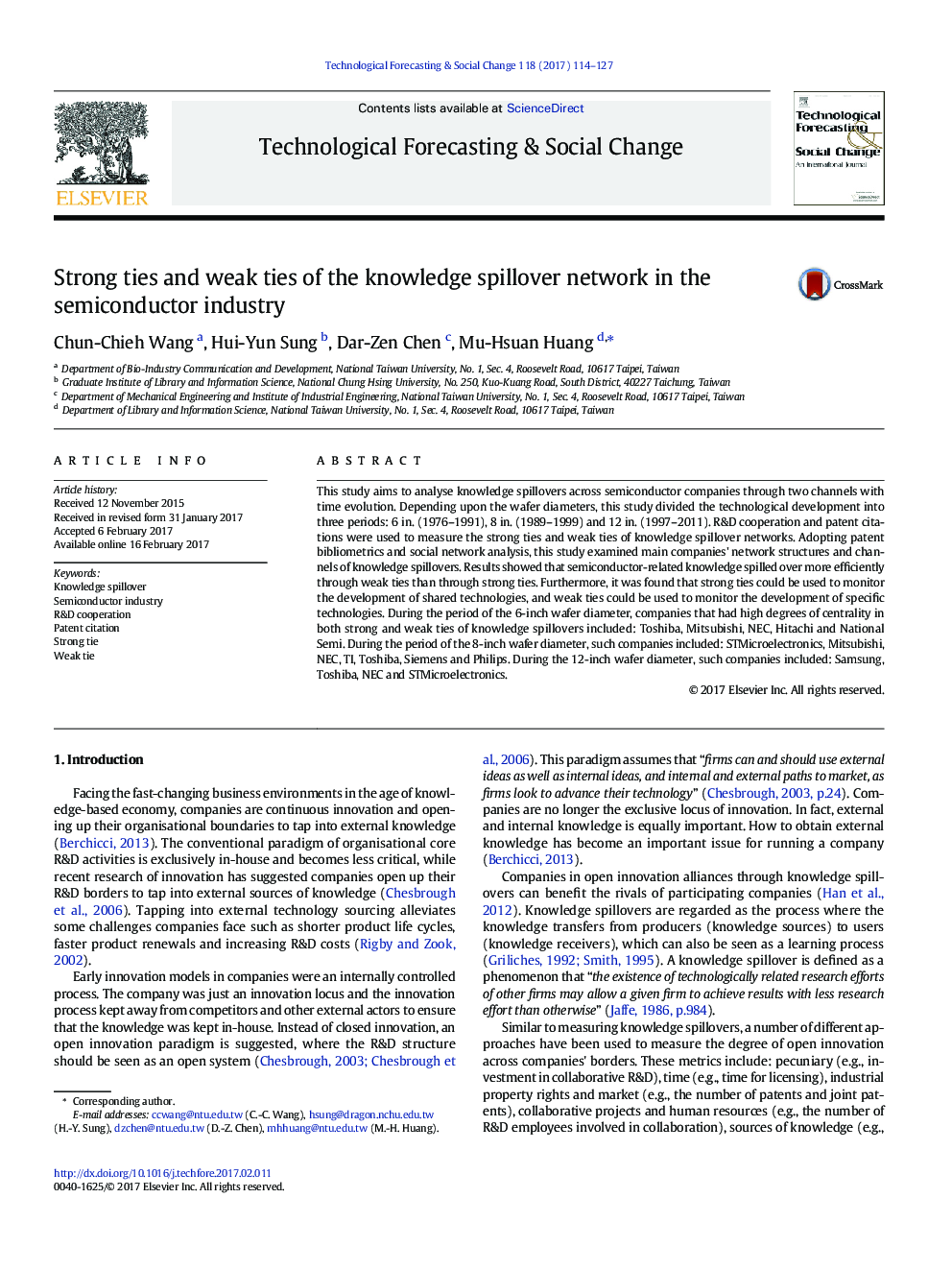| Article ID | Journal | Published Year | Pages | File Type |
|---|---|---|---|---|
| 5037036 | Technological Forecasting and Social Change | 2017 | 14 Pages |
â¢R&D cooperation was used to measure the strong ties of knowledge spillovers.â¢Patent citation was used to measure the weak ties of knowledge spillovers.â¢Semiconductor knowledge spilled over through weak ties than through strong ties.â¢Strong ties could be used to monitor the development of shared technologies.â¢Weak ties could be used to monitor the development of specific technologies.
This study aims to analyse knowledge spillovers across semiconductor companies through two channels with time evolution. Depending upon the wafer diameters, this study divided the technological development into three periods: 6Â in. (1976-1991), 8Â in. (1989-1999) and 12Â in. (1997-2011). R&D cooperation and patent citations were used to measure the strong ties and weak ties of knowledge spillover networks. Adopting patent bibliometrics and social network analysis, this study examined main companies' network structures and channels of knowledge spillovers. Results showed that semiconductor-related knowledge spilled over more efficiently through weak ties than through strong ties. Furthermore, it was found that strong ties could be used to monitor the development of shared technologies, and weak ties could be used to monitor the development of specific technologies. During the period of the 6-inch wafer diameter, companies that had high degrees of centrality in both strong and weak ties of knowledge spillovers included: Toshiba, Mitsubishi, NEC, Hitachi and National Semi. During the period of the 8-inch wafer diameter, such companies included: STMicroelectronics, Mitsubishi, NEC, TI, Toshiba, Siemens and Philips. During the 12-inch wafer diameter, such companies included: Samsung, Toshiba, NEC and STMicroelectronics.
